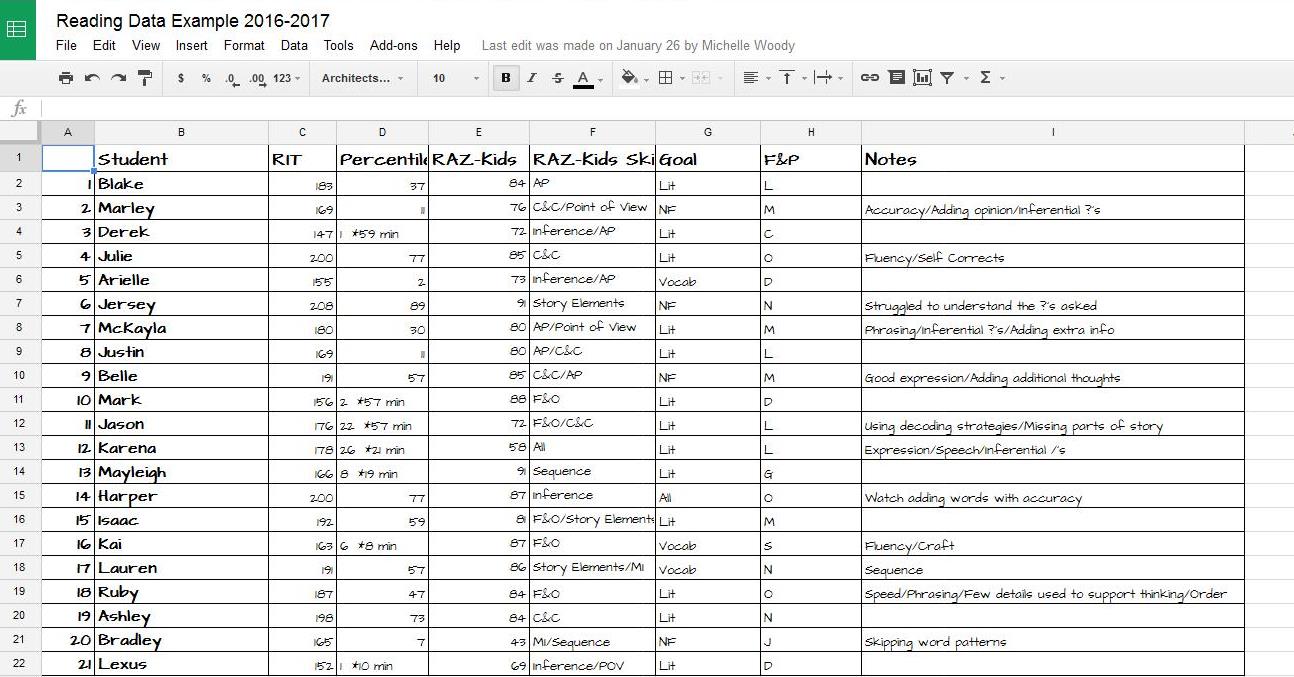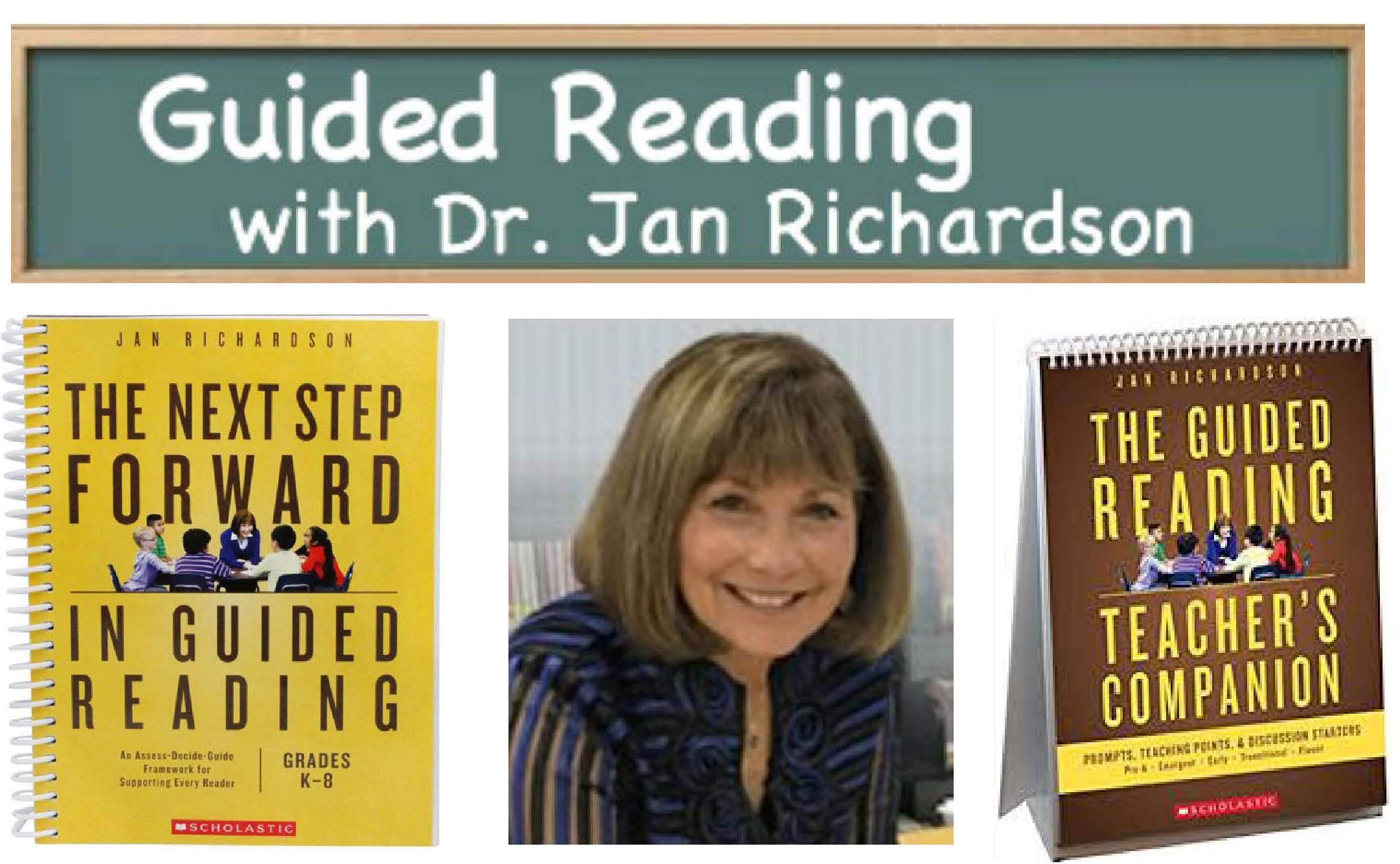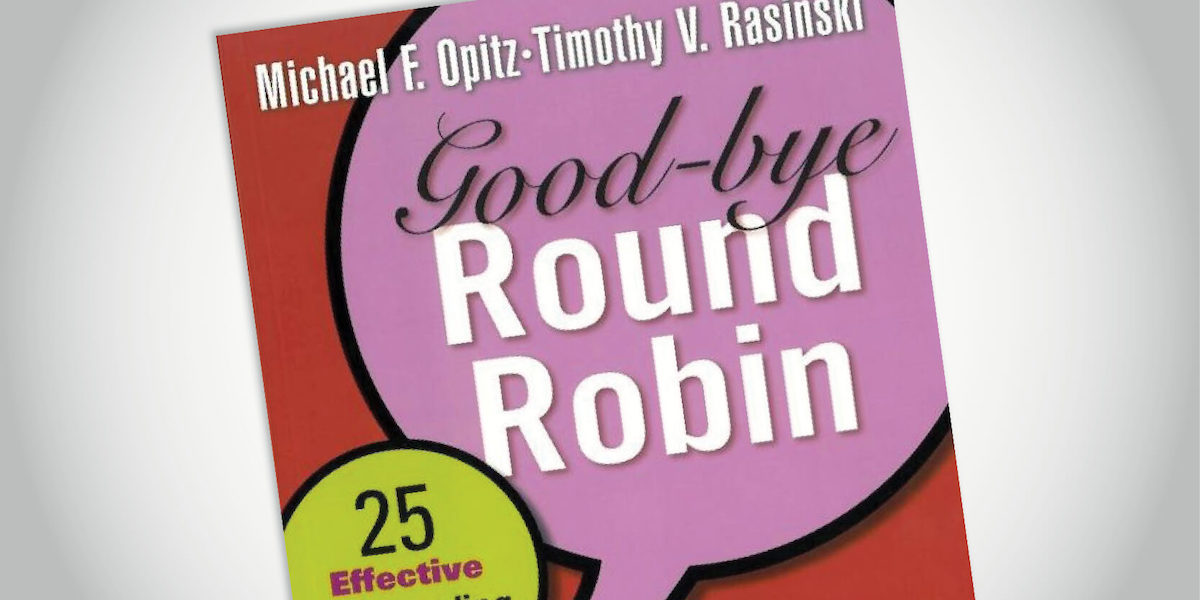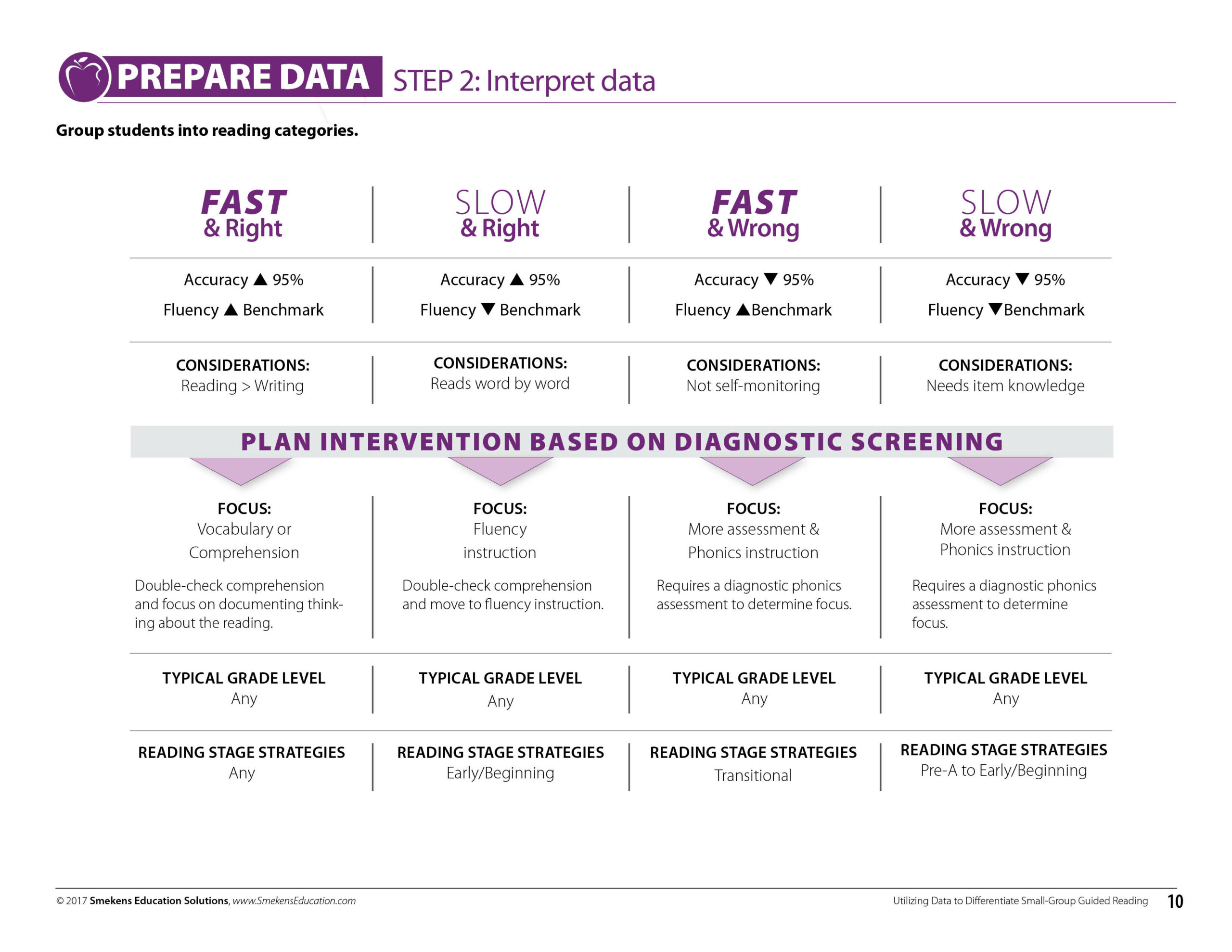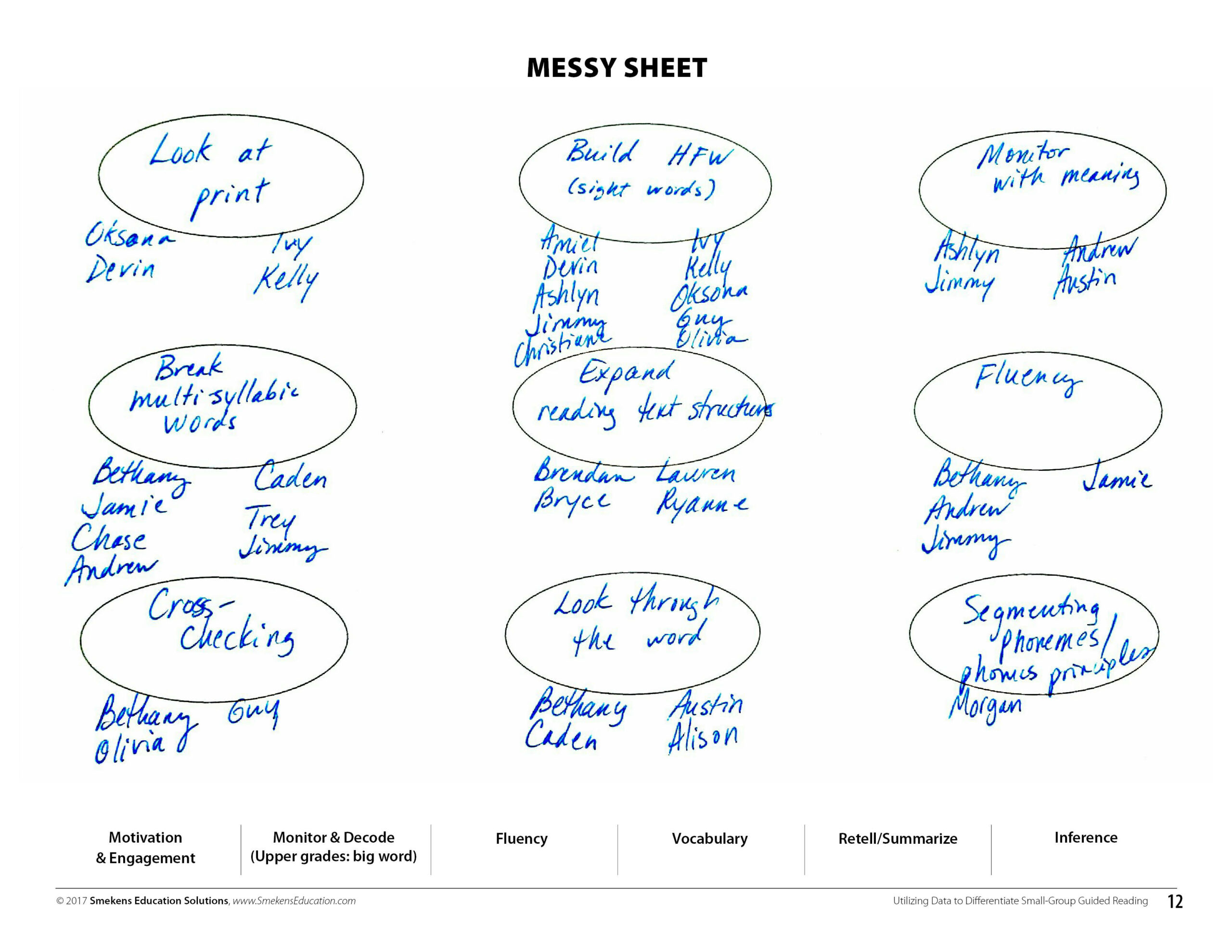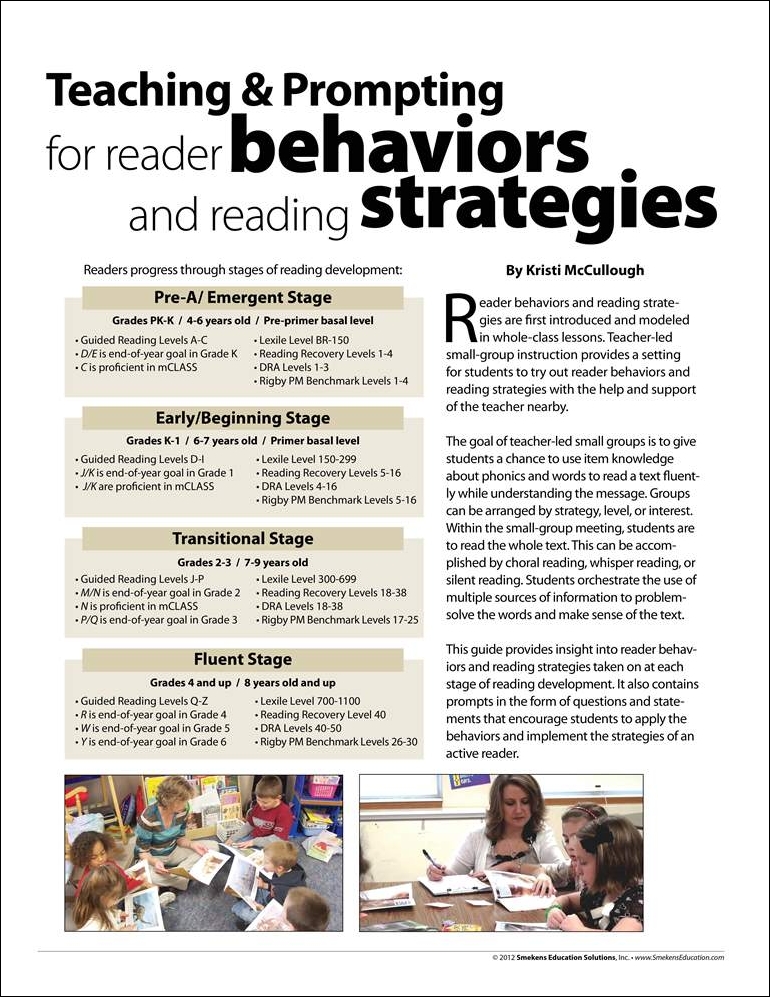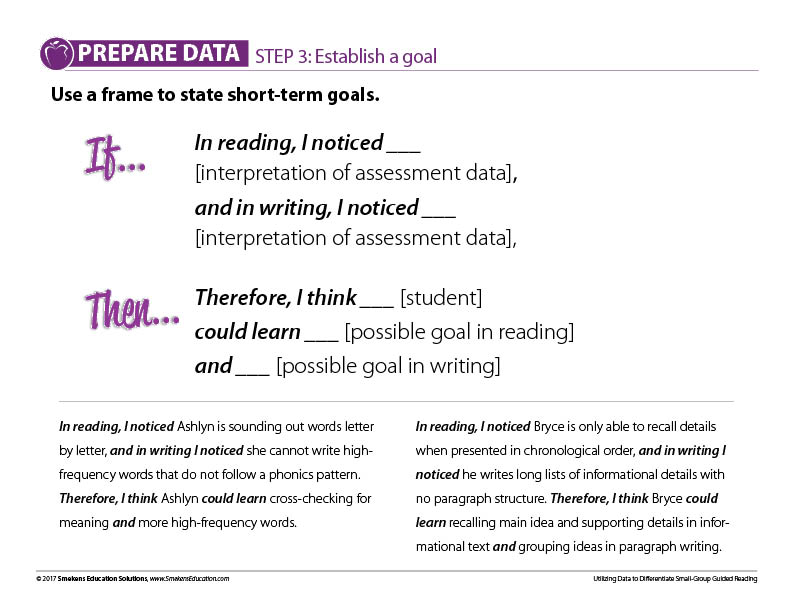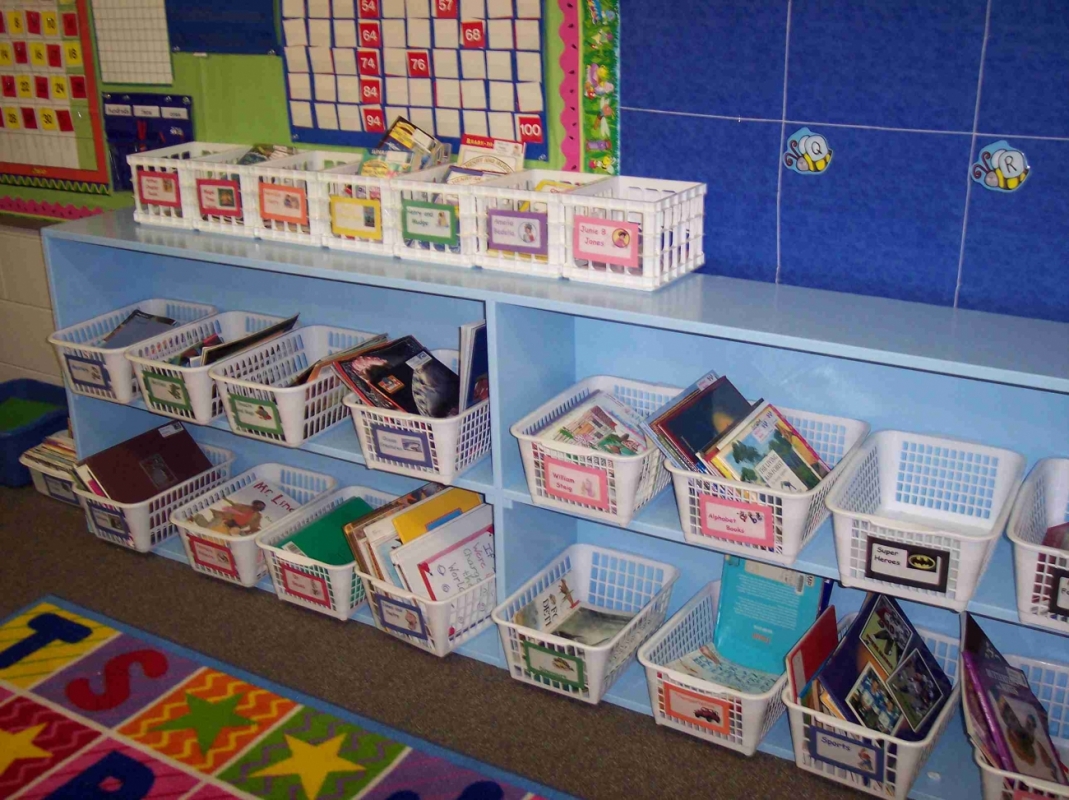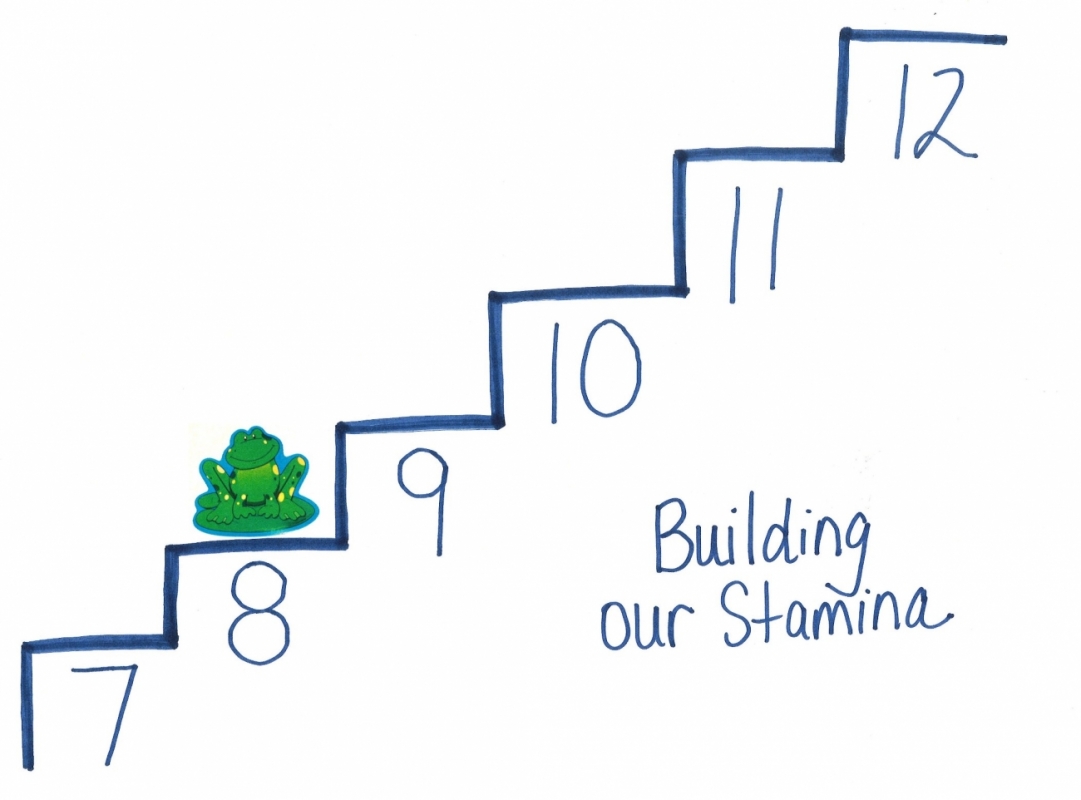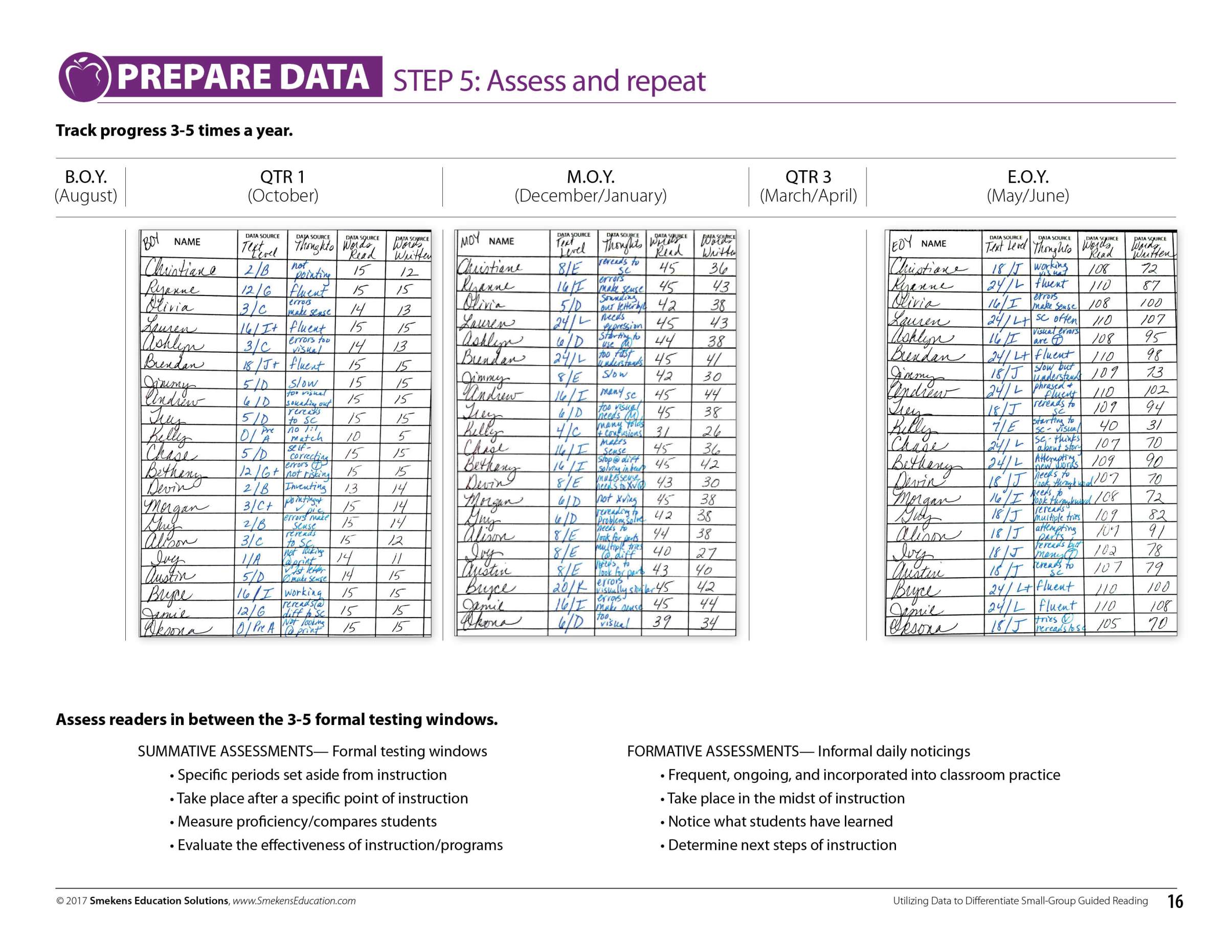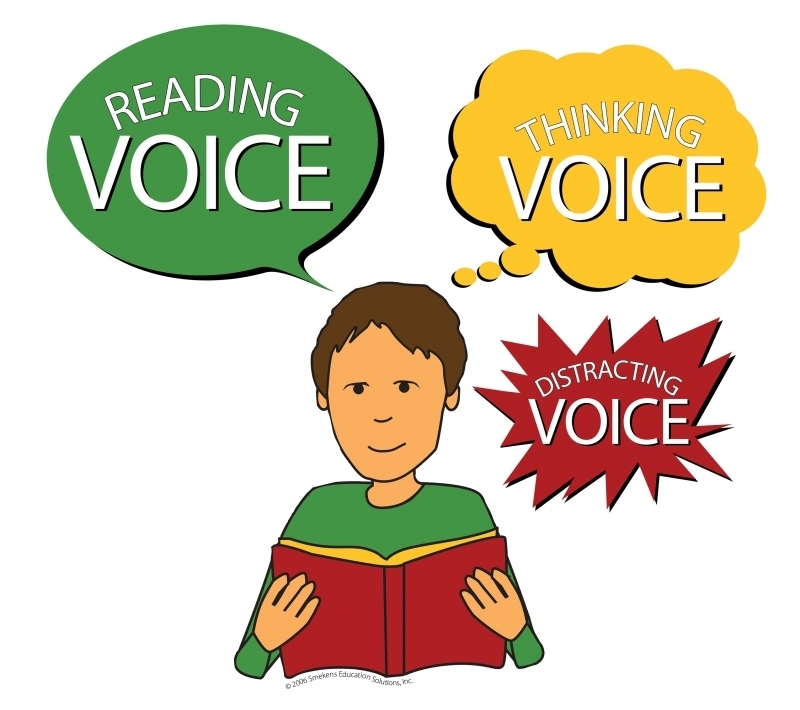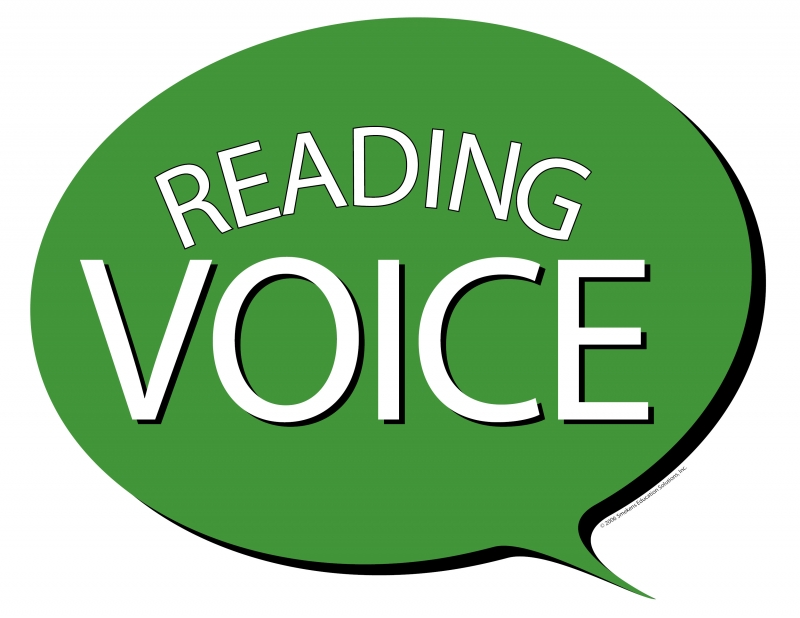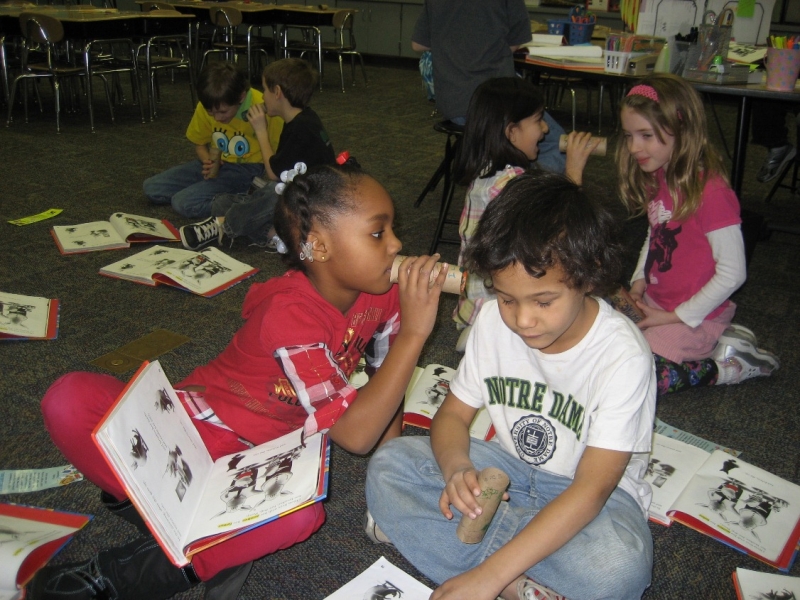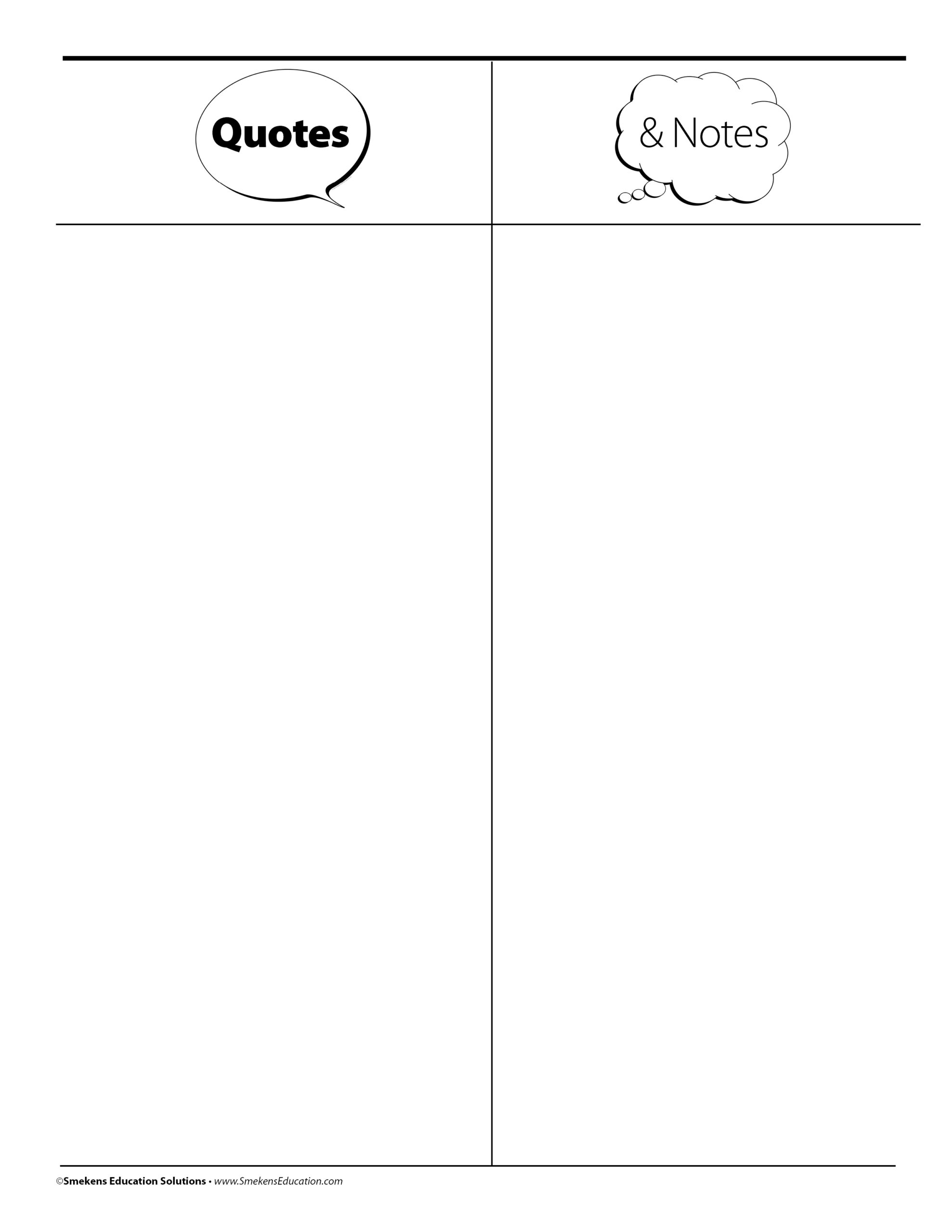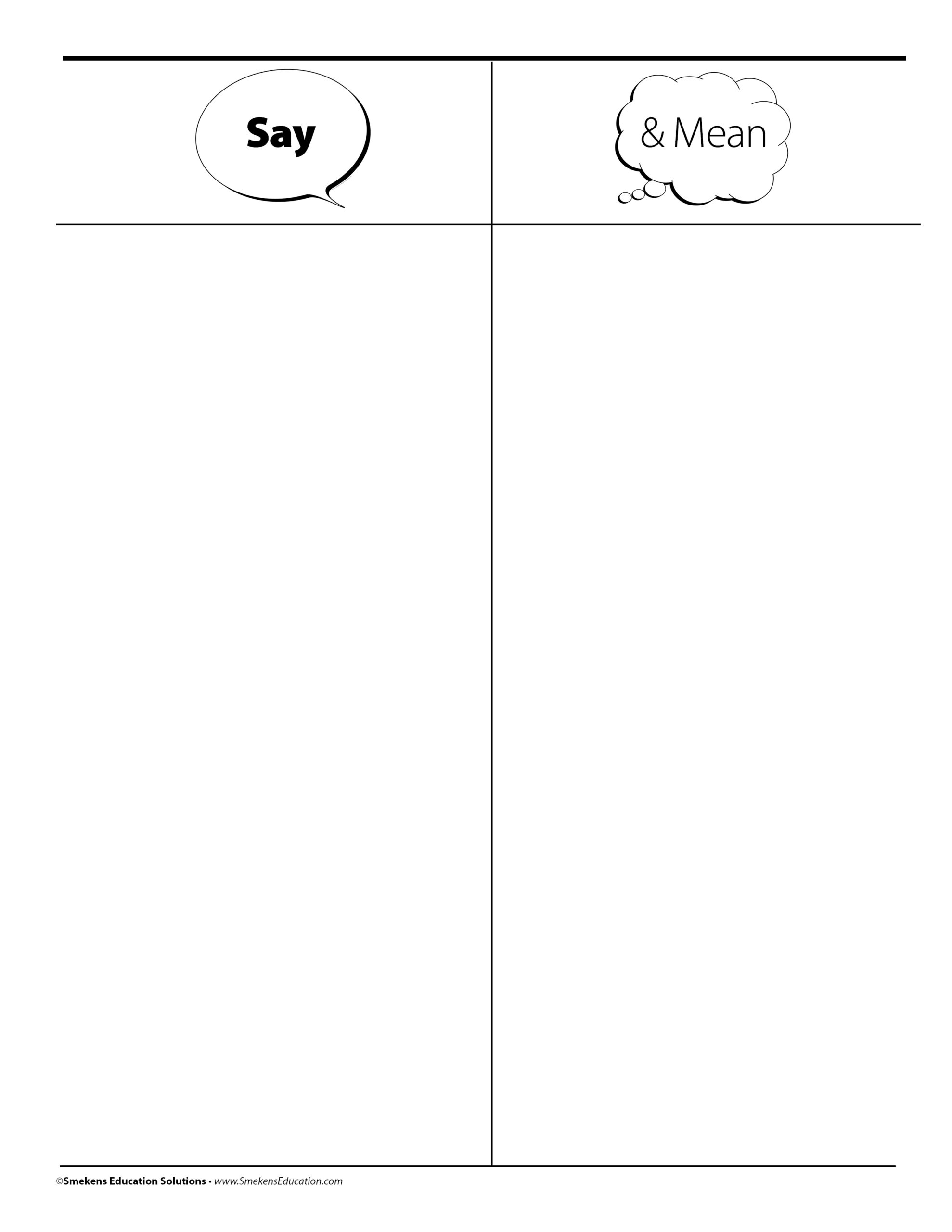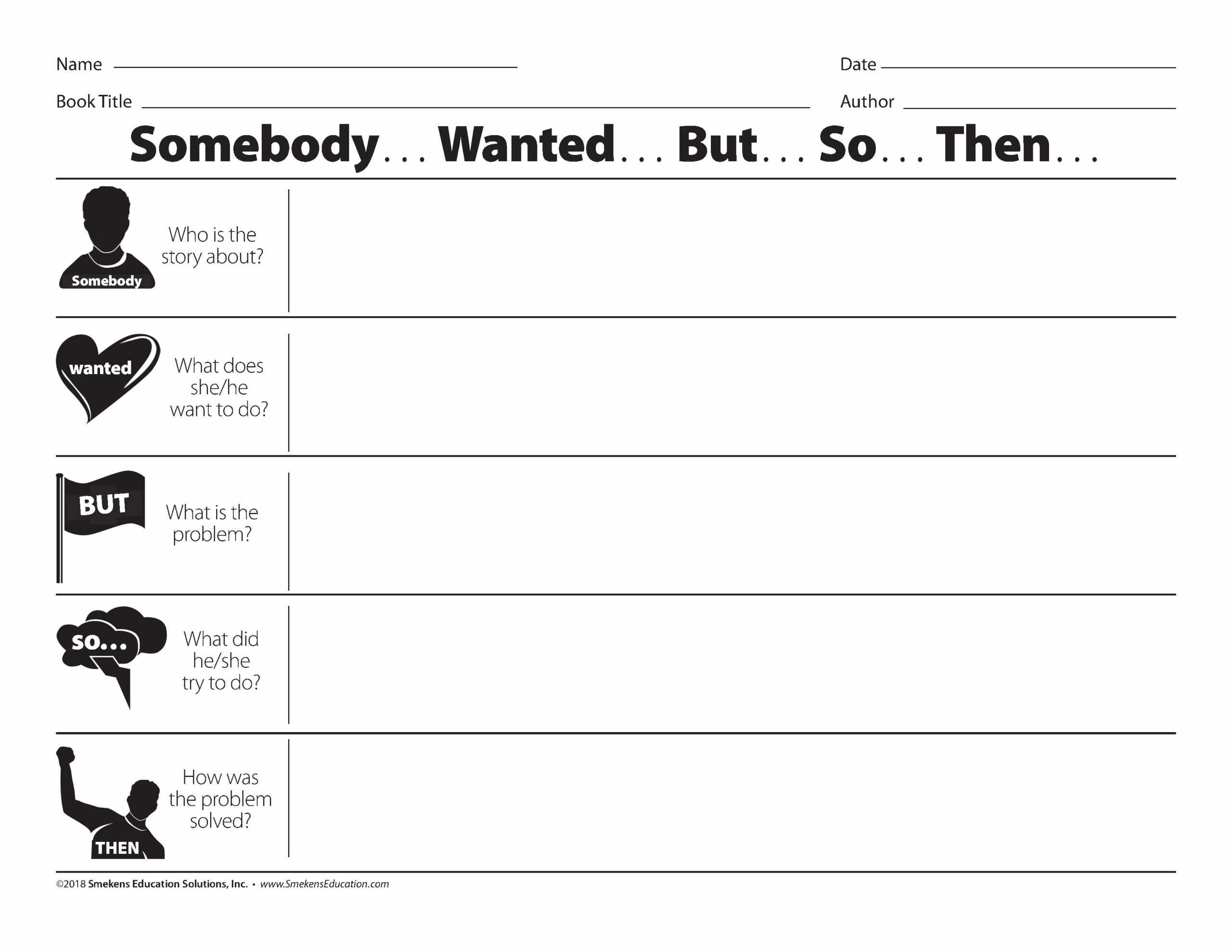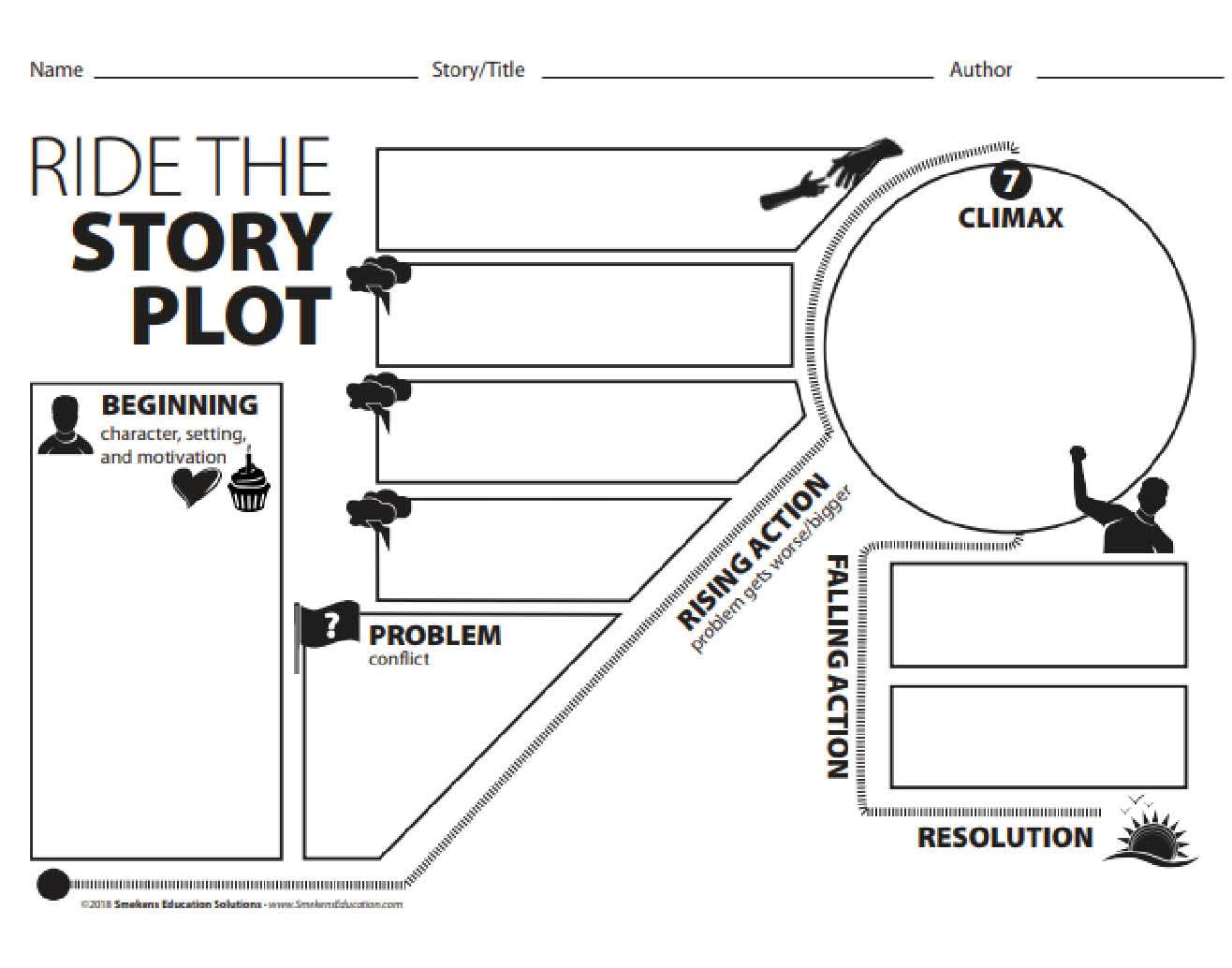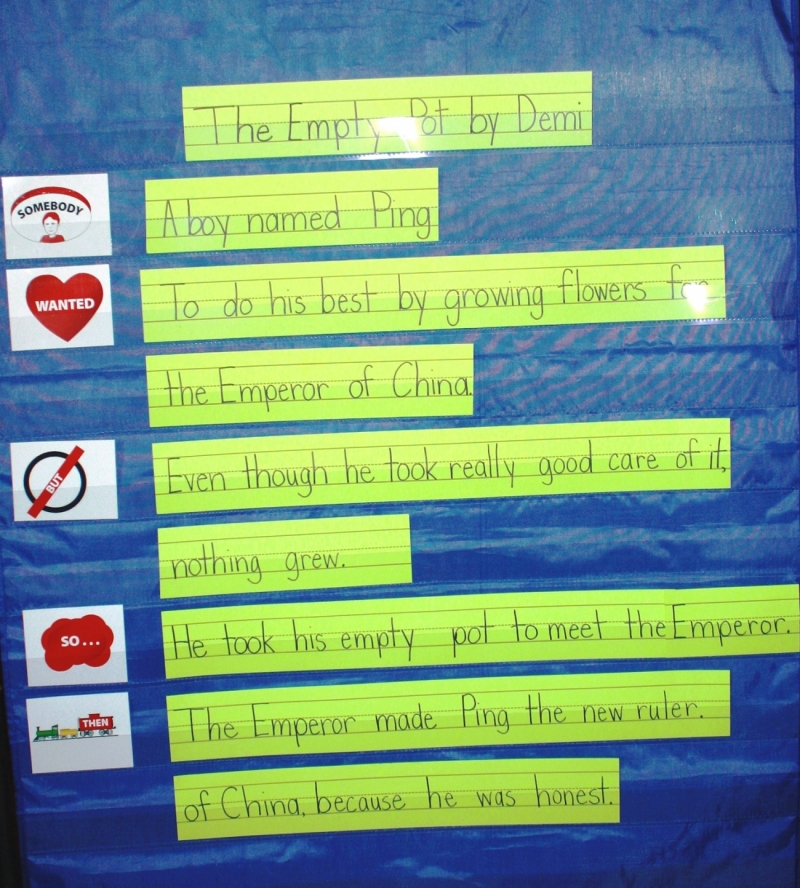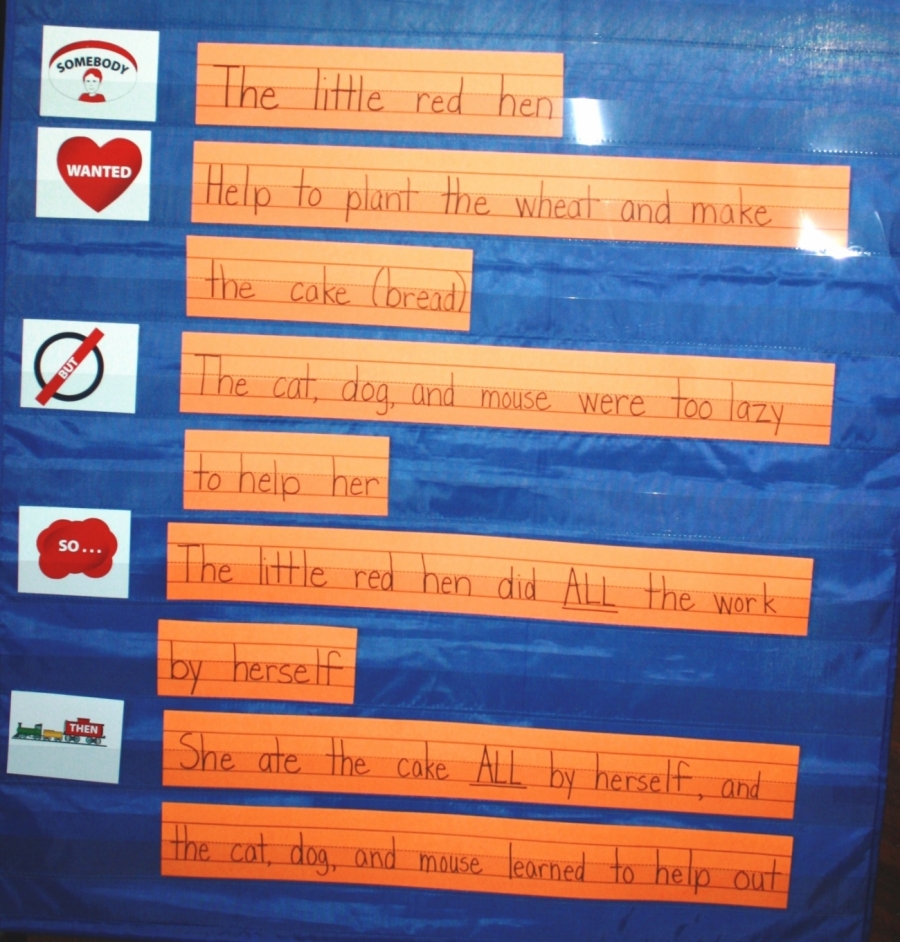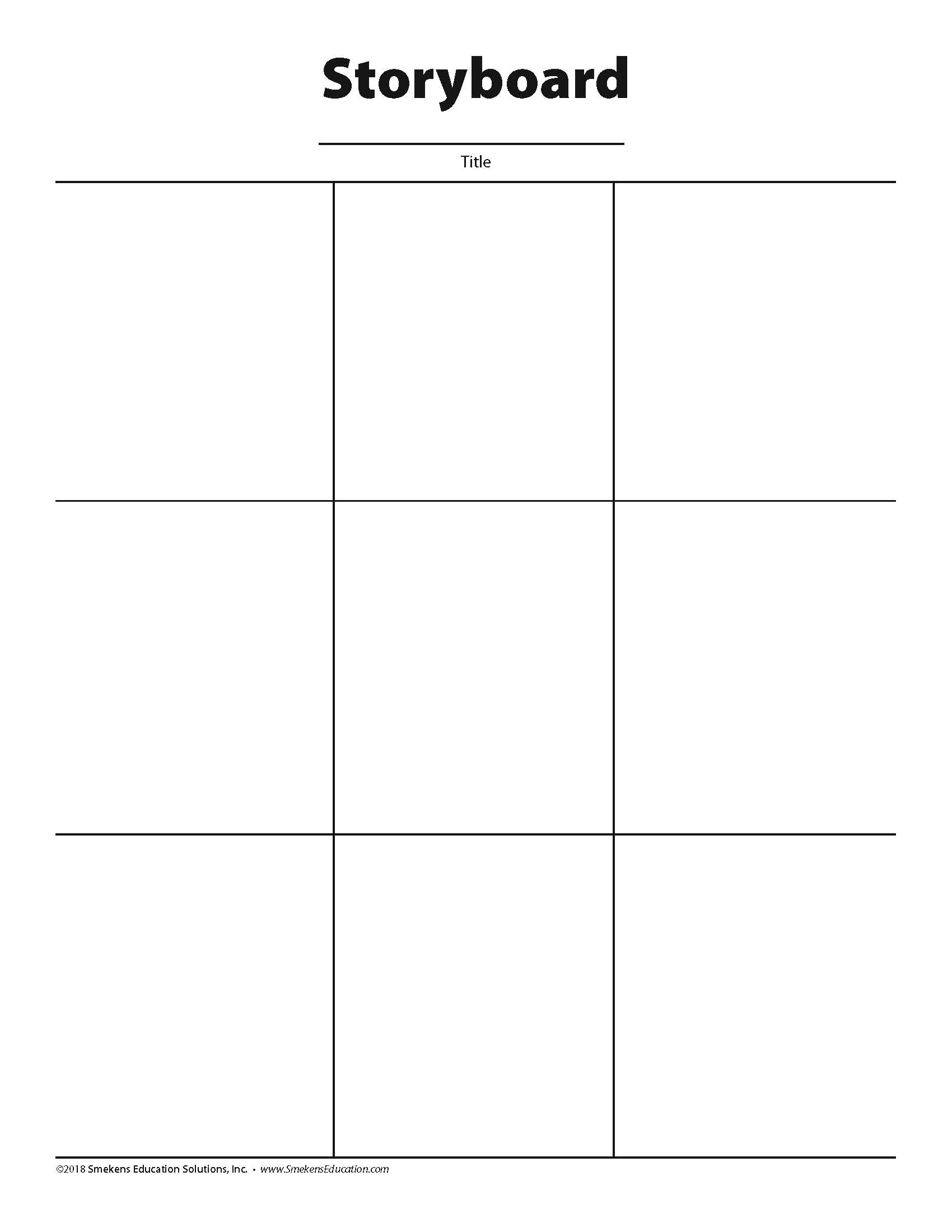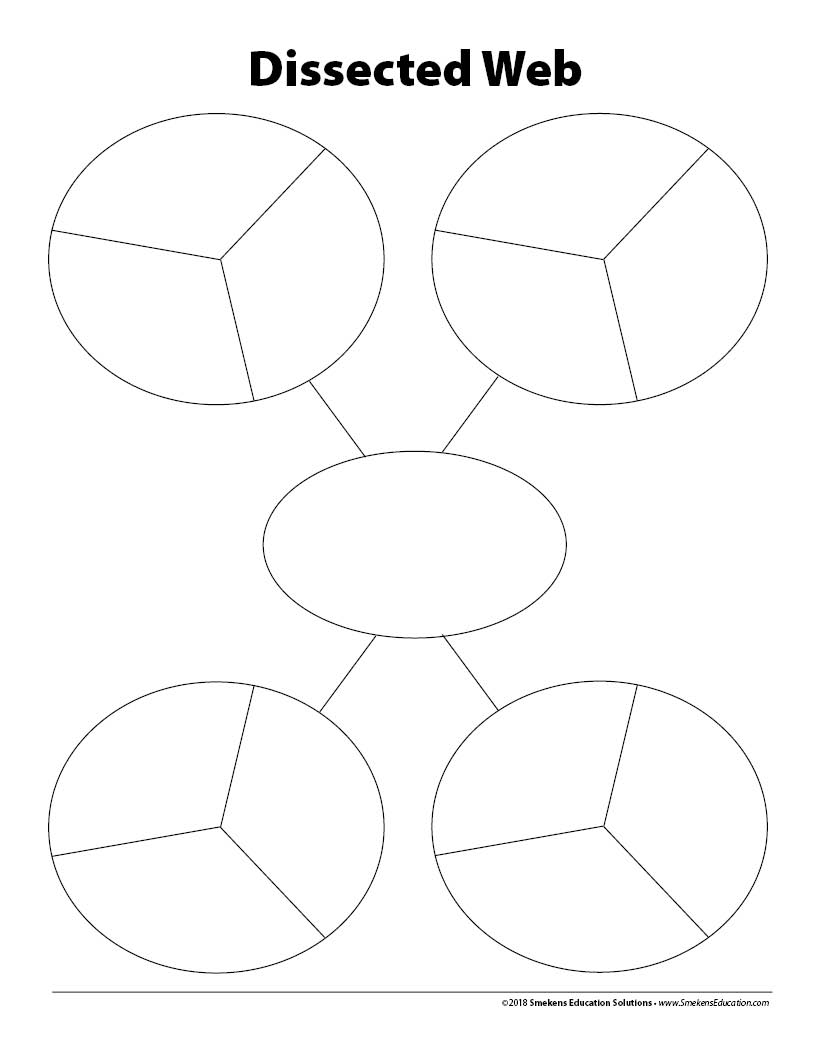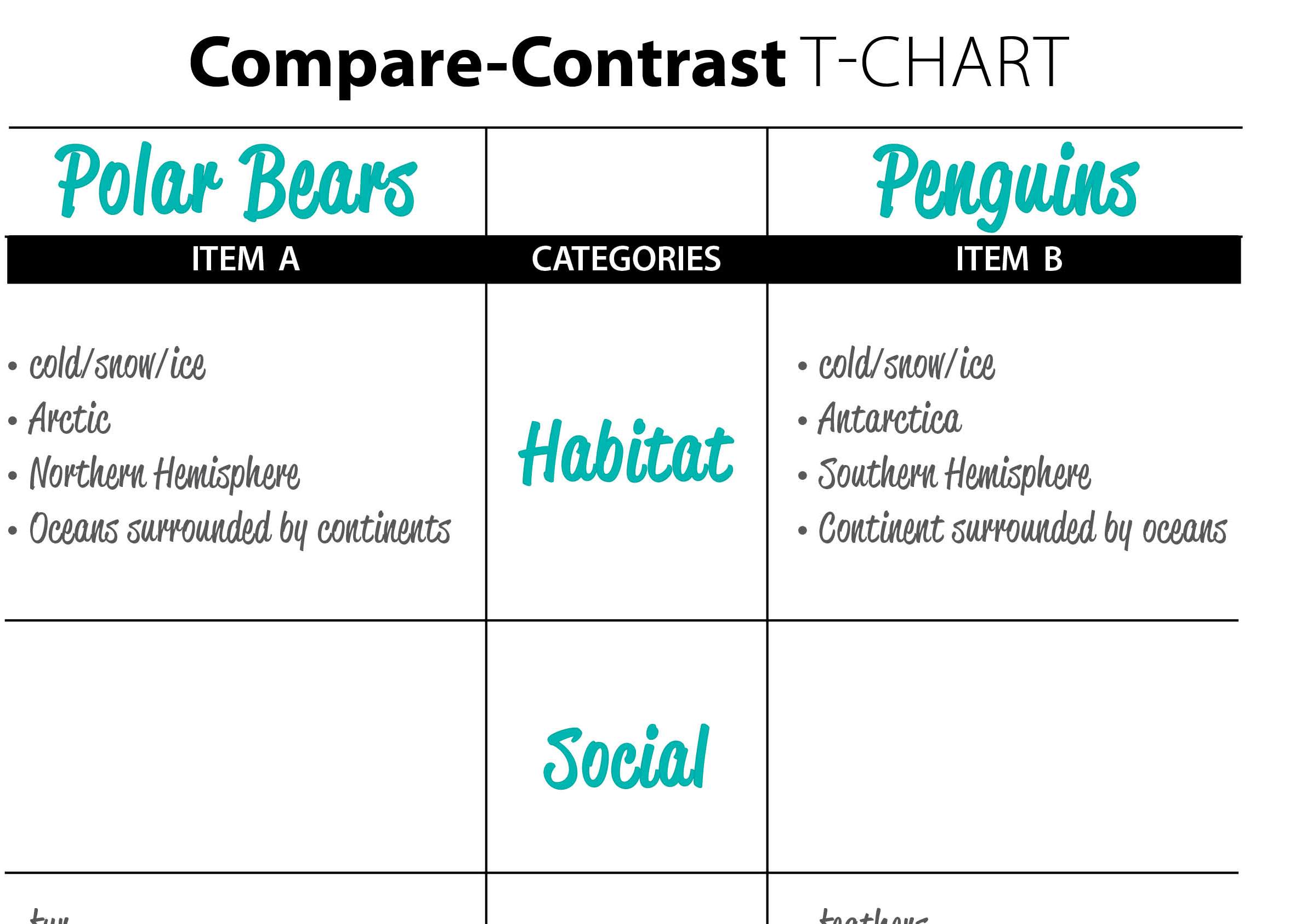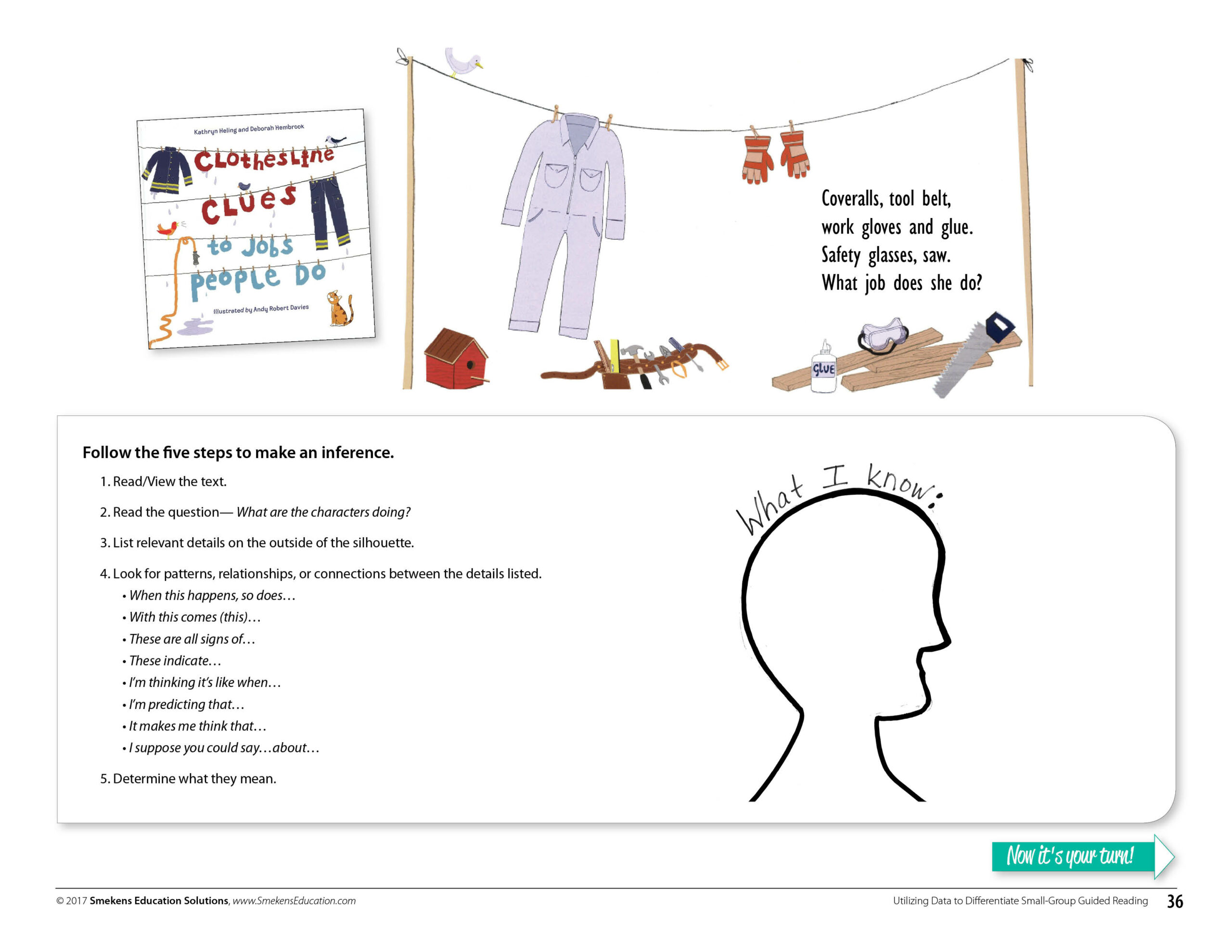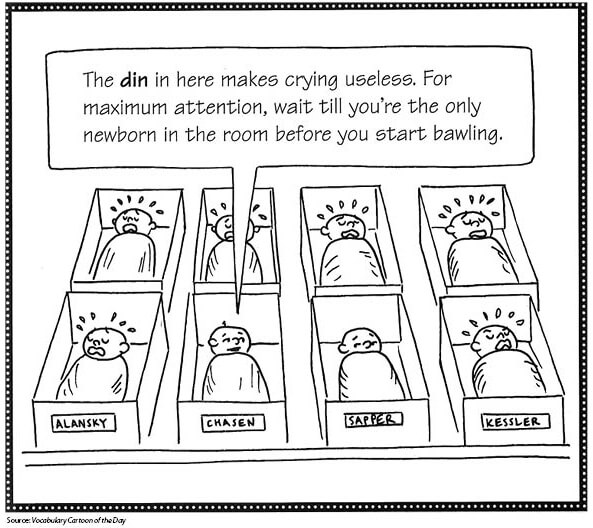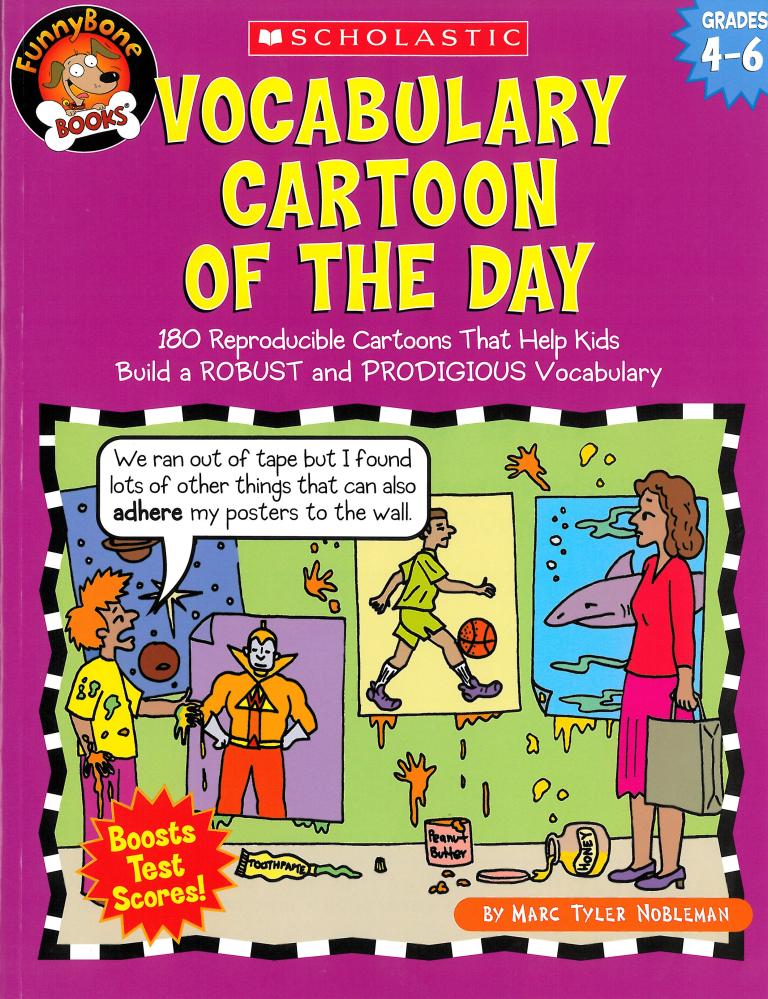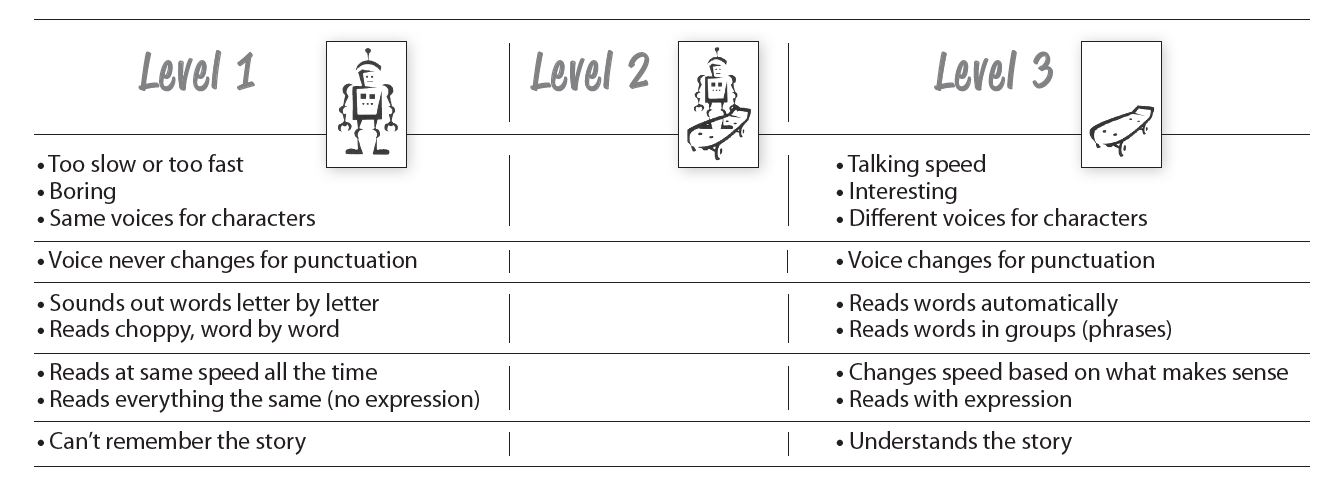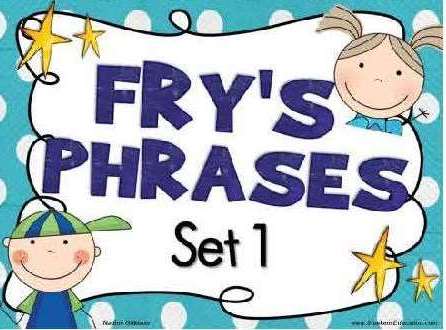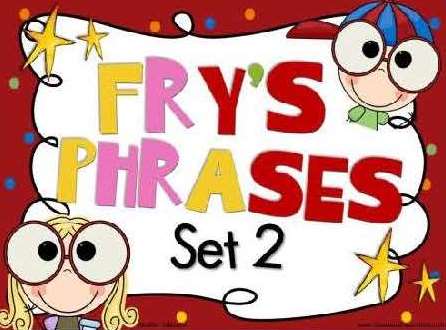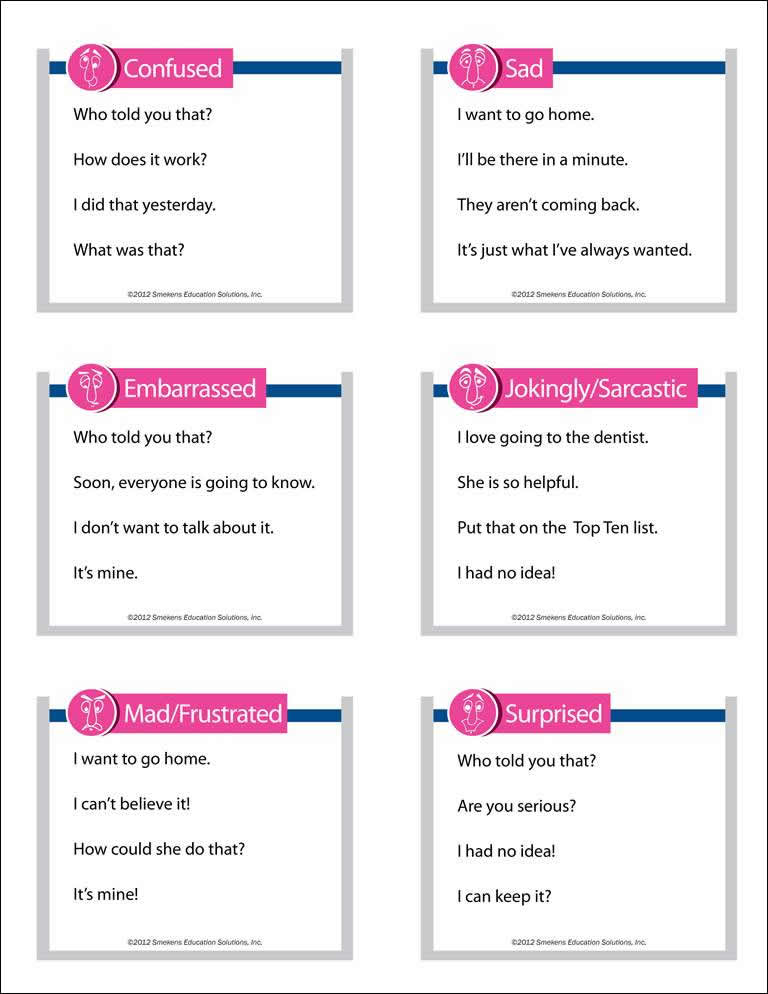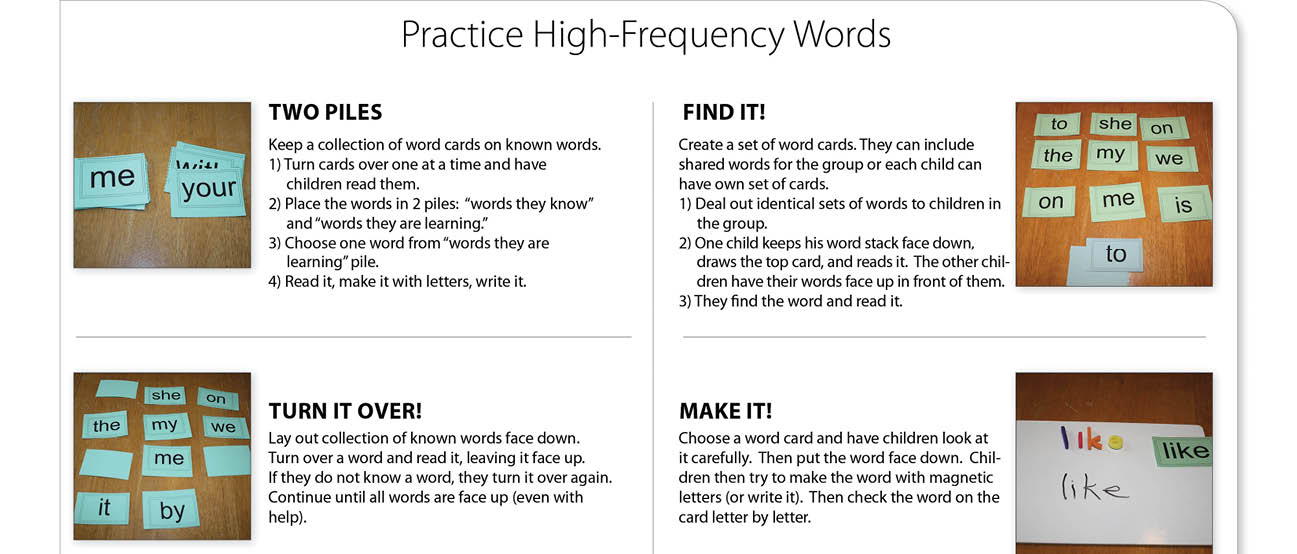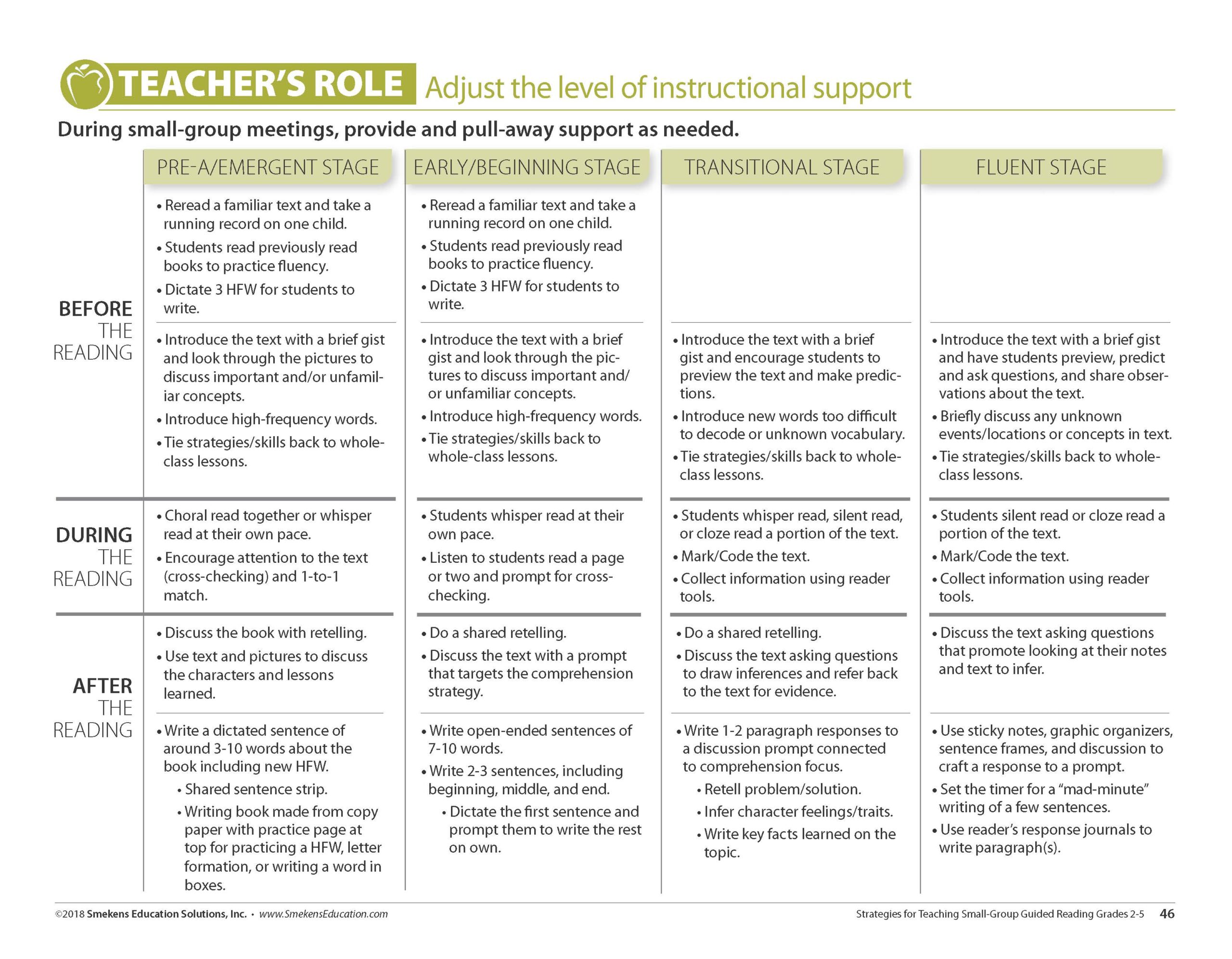Utilizing Data to Differentiate
Small-Group Guided Reading
SECRET SITE
Prepare the Data in 5 Steps
Execute instruction based on data collected
Step 1: Collect & organize data
Compile student data
Sample data from third graders at Mary Raber Elementary (Columbia City, IN).
Adjust expectations
Jan Richardson, author of the The Next Step in Guided Reading, has a new book The Next Step Forward in Guided Reading. Jan’s new book offers many resources, videos, and downloadables that support teachers conducting small-group instruction.
In small groups, use a variety of oral reading strategies based on the needs of readers.
Differentiate small-group lessons based on reader needs revealed in the Data Tracker.
Step 2: Interpret data
Group students with similar errors and/or strengths
The Teaching and Prompting Guide provides insight into reading behaviors and reading strategies. Each strategy includes skills with prompts and questions for each developmental stage of reading.
Step 3: Establish a goal
Pick one area to target
Based on data, apply the If…Then… approach to future instruction.
Step 4: Create an action plan
Increase motivation and engagement
Get texts & room physically organized
Organize your Classroom Library by genre, author, or topic to entice students to read books in their areas of interest.
- Mandy Gregory and Beth Newingham offer great FREE resources for teachers with advice and labels: Books & Labels from Tips for Teachers and Gazette’s Printables.
- Reading Rockets article for step-by-step directions to set up a classroom library.
Practice & build stamina
The key to building stamina is to give each student a sampling of books and have the whole class practice reading independently at the same time.
After setting up the physical location of the Classroom Library, use these tips & tricks to teach students how to read independently while practicing the action of “Classroom Library.”
Use visual displays to help grow reader stamina bit by bit until students achieve the desired number of minutes of reading independently during the Classroom Library.
Nadine Gilkison uses a PowerPoint at the beginning of the year to keep track of time while students are building stamina.

Reading Stamina Timer Grades 1-2
PDF | PPT | Google Slides

Find many other ideas to increase motivation and engagement in Jennifer Serravallo’s The Reading Strategies Book.
Step 5: Assess & repeat
Track progress 3-5 times a year
Target If/Then Strategies
Target Retelling Ideas
Build readers who are aware of their thinking
Find ways to make the reading process concrete.
For intermediate grades, use the Beats™ Headphone graphic.
Use toilet paper tubes for students to whisper their Thinking Voice thoughts into.
Retell with key details during and after reading
Track reader thoughts with the Quotes & Notes graphic organizer.
Target Summarizing Ideas
Narrow down the details
Summarize with frames
Students’ oral and written summaries need to match the same text structure of the passage. Before asking students to generate a summary based on reading, identify the text’s organizational pattern by looking at its transition words.
Identify the highlights
A summary is significantly shorter than the retelling. Use the analogy of ESPN SportsCenter to show students how to use just the highlights from the passage told in order for the summary.
Target Inferring Ideas
Demonstrate an inference in 5 steps

Identify the 5 steps to making an inference.
Silhouette Template
Chart Sense K-2 | 3-8
Soft House | Template
Target Vocabulary Strategies
Increase comprehension while reading with vocabulary
Help students determine the meaning of unfamiliar words. During reading, utilize author’s context clues to acquire a word’s meaning.
Target Fluency Facets
Attend to format and punctuation
Rubric Example
Robot icon | Robot on skateboard icon | Skateboard icon
If students lose their places or accidentally skip lines while reading, teach them to place a bookmark above the line they are reading and slide it down.
Utilize Fry’s Phrases to help students gain automaticity with common phrases.
Practice reading punctuation while adding expression with the What’s My Voice Fluency cards. Available in grade-level specific digital downloads.
Target Self-Monitoring & Decoding
Focus on phonics principles
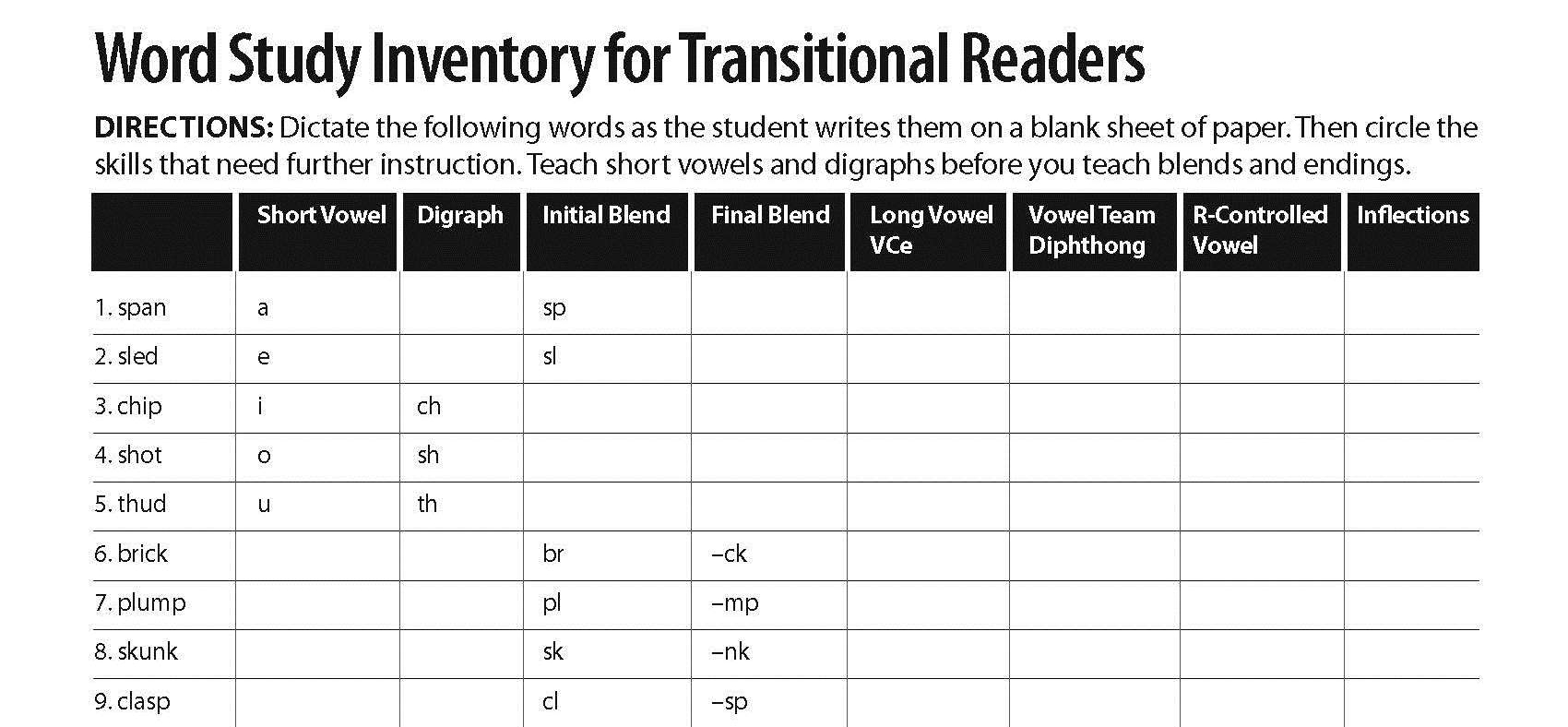
Assess students’ knowledge of phonics principles by using the Word Study Inventory for Transitional Readers. Collect the data for the students in the group and deliver targeted word study instruction during small group meetings.
Practice high-frequency words
Beginning readers need to build a core knowledge of the common words that will appear frequently within their reading. use the list of High-Frequency Words found in leveled texts A-E to assess and keep track of known and new words to highlight in the small-group meetings.
Untangle confusion with letters
Untangle letter confusions by assessing known letters, using consistent verbal directions for writing letters, and linking the letters to an alphabet chart.
Adjust level of Teacher Support
Provide & pull away support as needed
Conduct small-group meetings, providing and pulling away support as needed.


